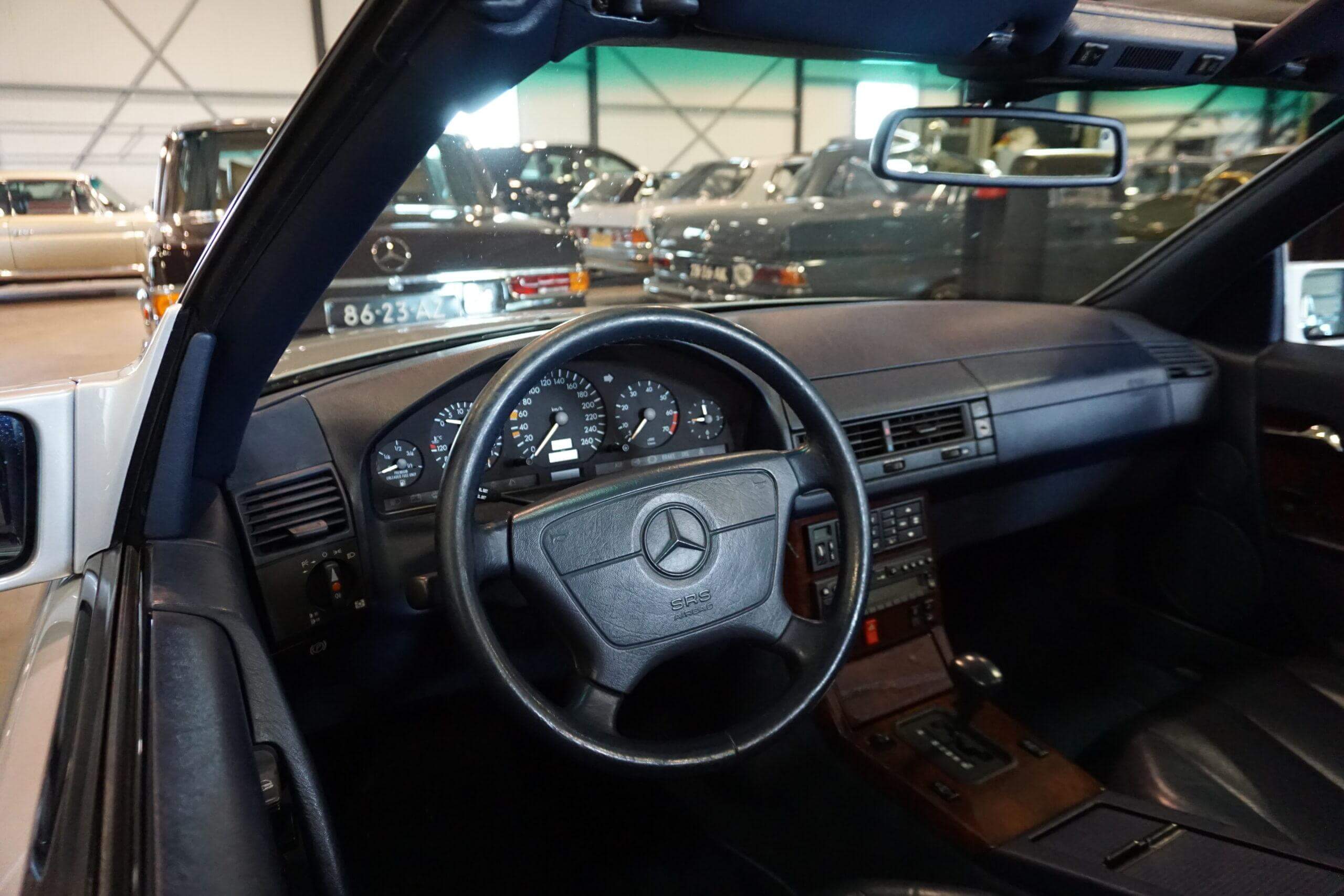Introductie en historie Mercedes-Benz R129
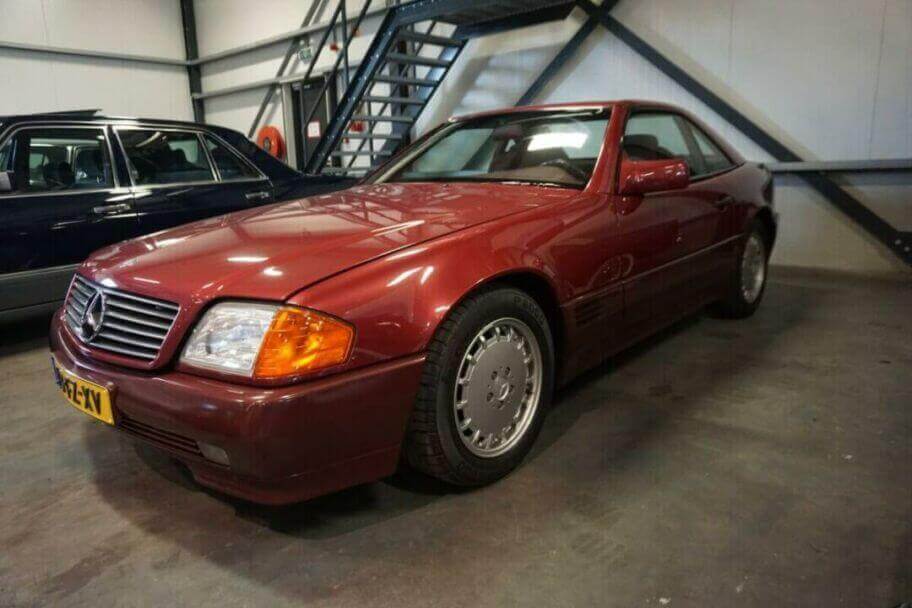
Introduction and History of the Mercedes-Benz R129 Series
The Mercedes-Benz R129 series, also known simply as the SL-Class (1989–2001), represents one of the most iconic and technically advanced luxury roadsters ever produced by Mercedes-Benz. Unveiled at the 1989 Geneva Motor Show, the R129 replaced the long-running R107 SL and immediately set new standards for performance, safety, comfort, and design in the luxury convertible market.
Development and Philosophy
Development for the R129 began as early as the late 1970s under chief engineer Bruno Sacco — who also designed the W126, W124, and W140 — with the goal of creating a thoroughly modern and technologically advanced grand touring roadster.
The R129 combined Mercedes-Benz’s traditional emphasis on safety and engineering excellence with sleek, aerodynamic styling and cutting-edge electronic systems. The car was designed from the ground up with an entirely new platform, rather than being a direct evolution of its predecessor.
Design and Styling
The R129 featured a modern, clean, and timeless design with strong horizontal lines, integrated bumpers, flush-fitting headlights, and an aerodynamic silhouette.
It introduced a more muscular stance, wider track, and lower profile compared to the R107.
Designer Bruno Sacco ensured the R129 was elegant, understated, and technologically advanced without unnecessary ornamentation.
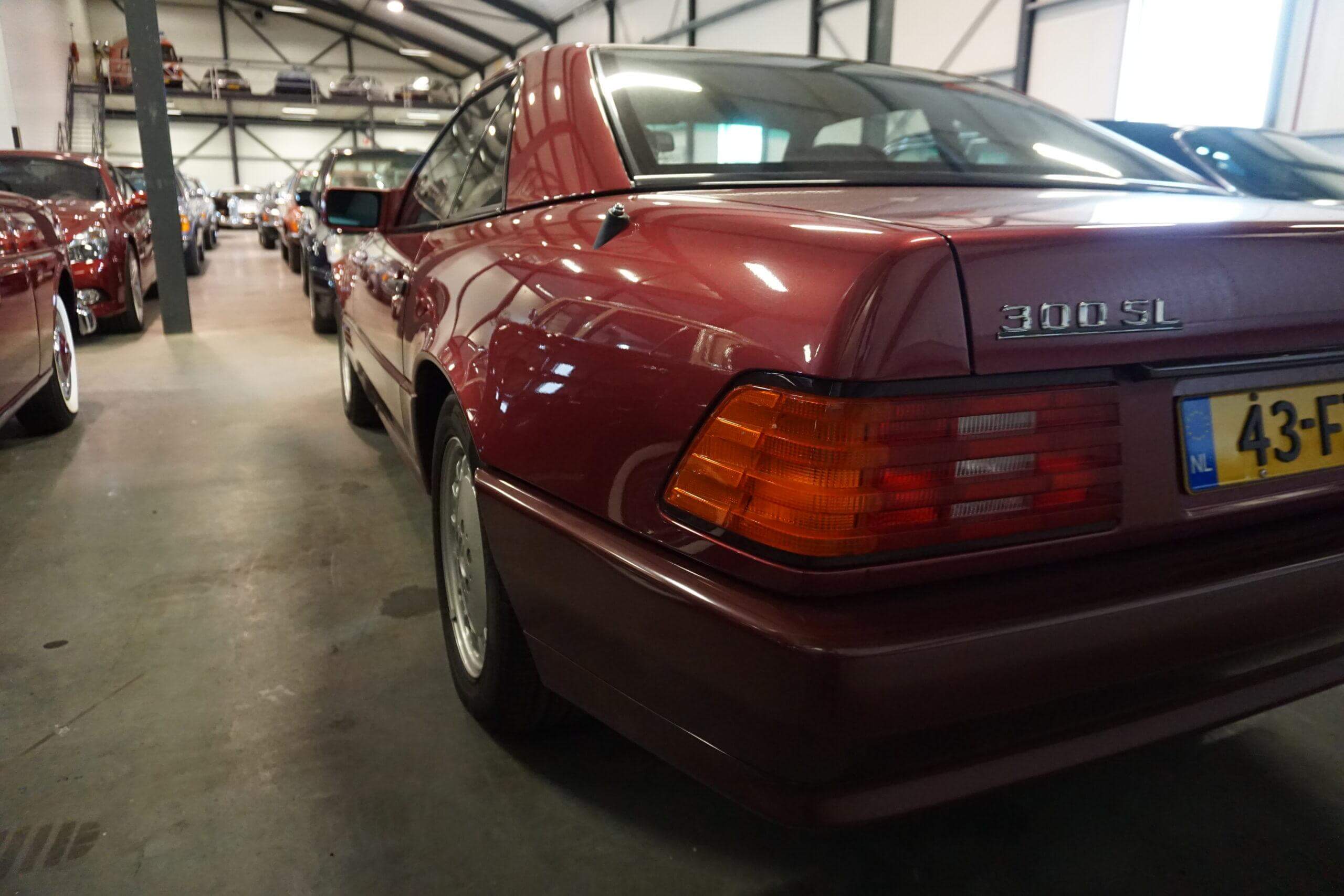
Technical Innovations
The R129 was revolutionary for its time and featured several world-firsts and advanced technologies:
Fully automatic electro-hydraulic convertible soft top (standard on all models).
Optional hardtop with heated rear window.
Automatic roll-over protection system: an integrated roll bar that automatically deployed if a rollover was detected, or could be raised manually.
Adaptive damping system (ADS) on select models.
Electronically adjustable suspension (Active Body Control introduced on late V12 models).
Electronic Stability Program (ESP) (introduced in later years).
Brake Assist System (BAS).
Side airbags (from 1996 facelift onward).
Fully independent multi-link rear suspension.
Excellent passive safety with robust crash structure.
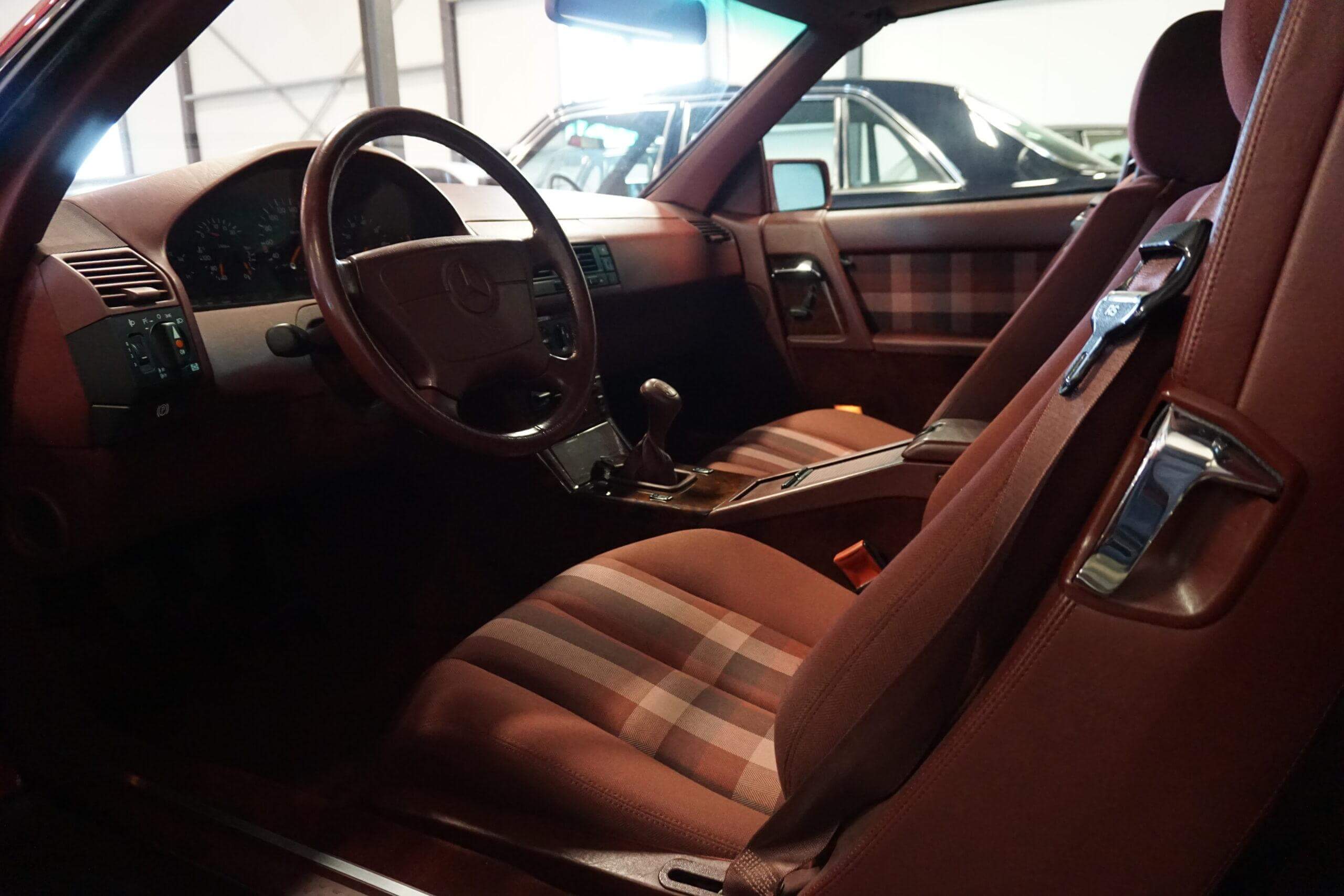
Model Range and Engines
Over its production span, the R129 was offered with a variety of engines, reflecting both technological development and market demands.
Petrol Engines:
| Model | Engine Code | Displacement | Power |
|---|---|---|---|
| 300SL | M103 | 3.0L I6 SOHC | 188 hp |
| 300SL-24 | M104 | 3.0L I6 DOHC | 231 hp |
| SL280 | M104 | 2.8L I6 DOHC | 193 hp |
| SL320 | M104 | 3.2L I6 DOHC | 220 hp |
| SL320 (later) | M112 | 3.2L V6 | 224 hp |
| 500SL / SL500 | M119 | 5.0L V8 | 320 hp (early), later 306 hp |
| SL500 (later) | M113 | 5.0L V8 SOHC | 306 hp |
| 600SL / SL600 | M120 | 6.0L V12 | 394 hp |
Note:
Early models used the traditional naming (e.g. 500SL), while after 1993 the designations were updated to SL500, SL600, etc.
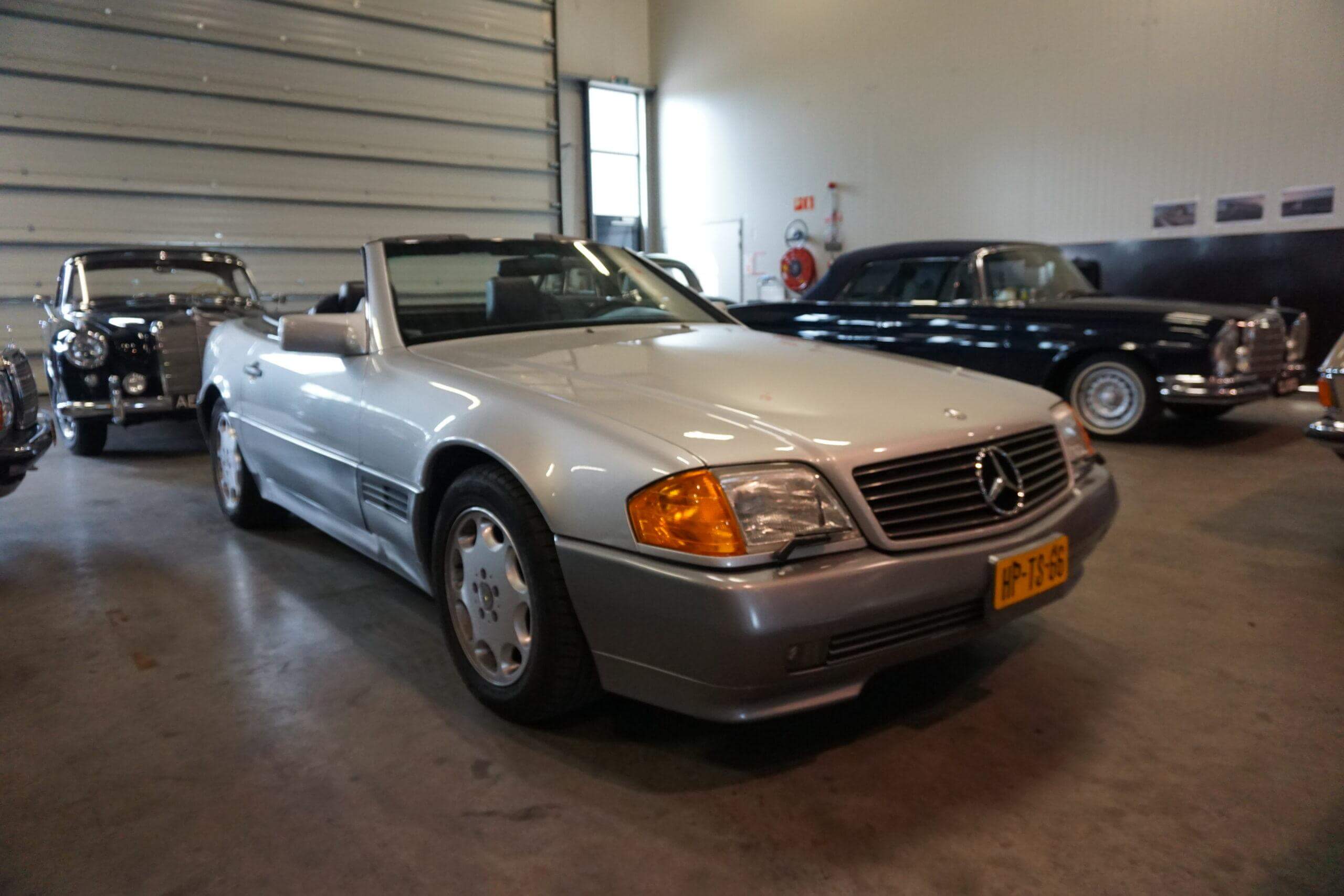
AMG Models:
SL60 AMG (1995–1998): 6.0L V8 (M119) — 381 hp
SL70 AMG (1995–1998): 7.0L V12 (M120) — 496 hp
SL73 AMG (1999–2001): 7.3L V12 (M120) — 518 hp
This engine later formed the basis of the Pagani Zonda’s powerplant.
SL55 AMG (1998–2001): 5.4L V8 — 354 hp
These AMG versions are among the rarest and most collectible R129 variants today.
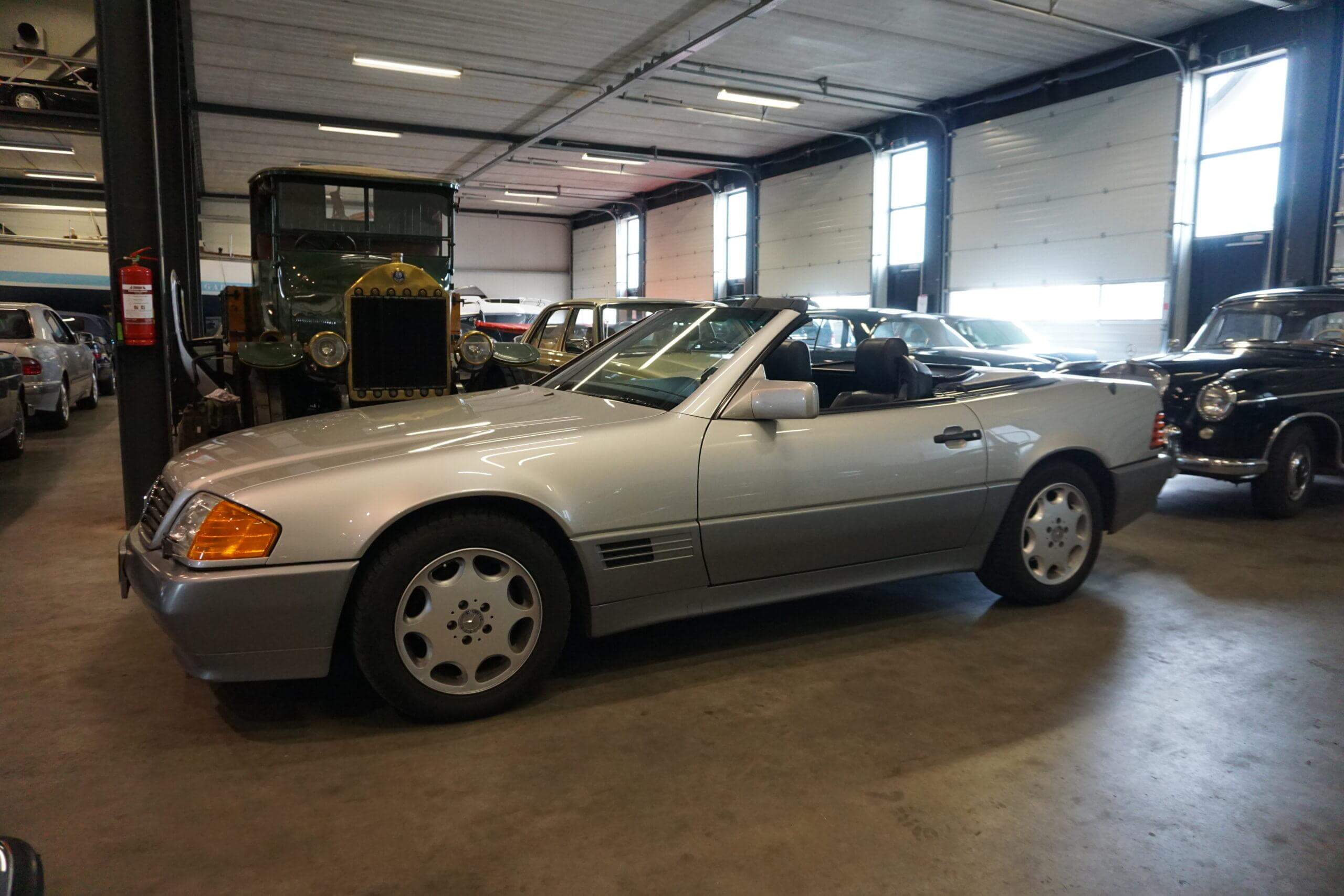
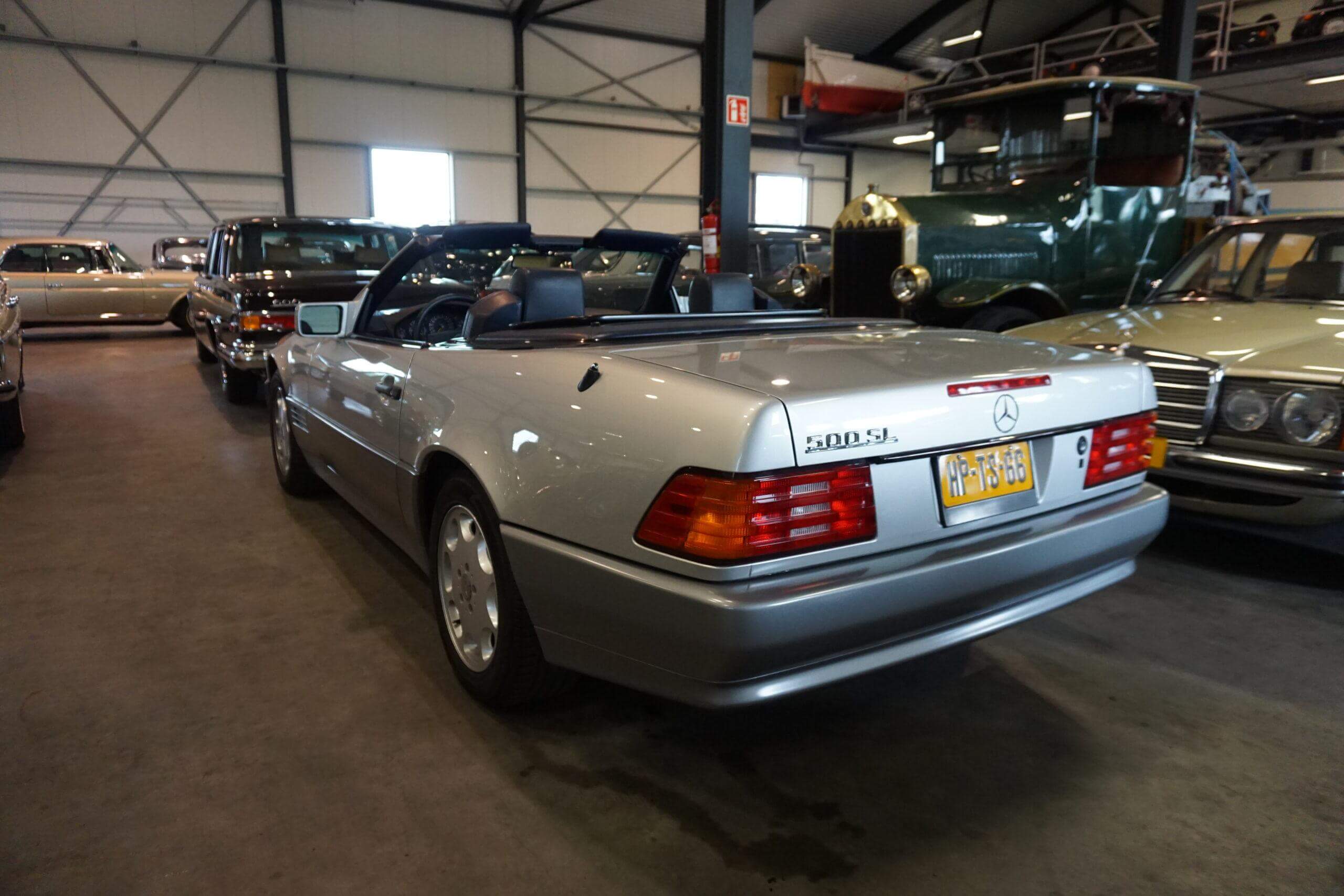
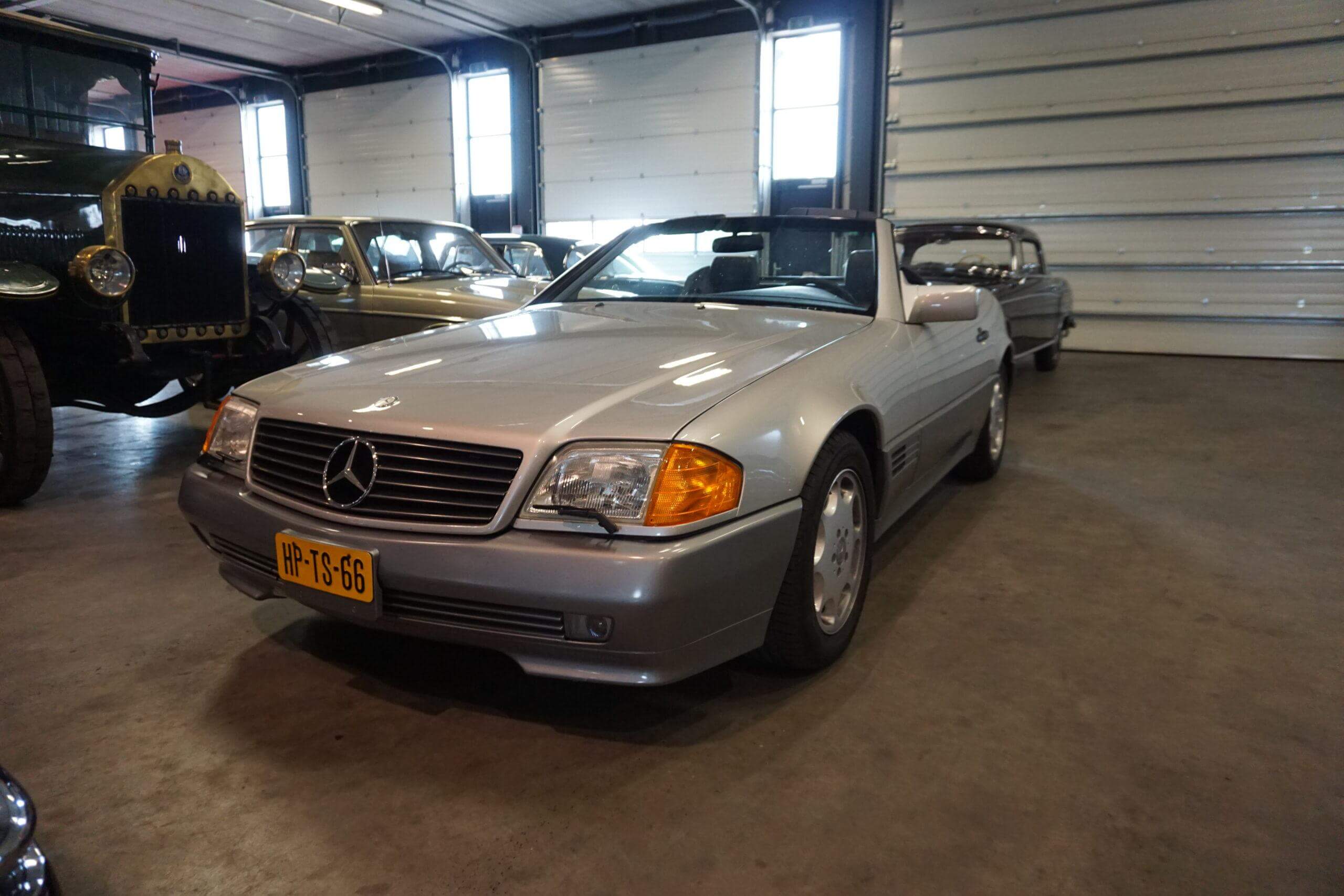
Legacy and Reputation
The R129 is often regarded as one of the finest modern classics produced by Mercedes-Benz:
Engineering excellence: extremely robust construction, superior ride quality.
Timeless design: the R129 still looks modern decades later.
Technological pioneer: many firsts for the convertible market.
Desirability: collectible AMG variants, especially SL73 AMG, have become highly sought-after.
Prestige: it served as a personal car for many celebrities, heads of state, and business leaders.
Today, the R129 stands as a perfect example of Mercedes-Benz’s 1990s philosophy: a true blend of over-engineering, safety, performance, and luxury.
Production Timeline
Production: March 1989 – July 2001
Total production: 204,940 units
Produced exclusively at the Mercedes-Benz factory in Bremen, Germany.
Facelifts:
1995 (First major update):
Clear turn signal lenses, updated wheels, minor trim changes.
New V8 and V12 engines updated for better emissions and efficiency.
1998 (Second facelift):
New V6 and V8 engines (M112 and M113).
ESP and BAS standard on all models.
Revised interior features, new steering wheel, updated electronics.
